Hidden stories revealed: The lesser-known Suffragettes in Bow
Sylvia Pankhurst is well-known for her contribution to Suffragettes movement while she lived in Bow but who were the other, lesser-known but equally revolutionary women fighting alongside her?
Sylvia Pankhurst moved from Manchester to Bow in 1912, where she opened a branch of the Women’s Social and Political Union, which eventually renamed itself to become the East London Federation of Suffragettes. In 1913, Pankhurst moved the operations to Roman Road, where she ran the revolutionary campaign that won some women the vote in 1918.
But the Suffragettes were made up of more than just Pankhurst and Davison. With the help of Sarah Jackson at the East End Women’s Museum, we raided the archives and uncovered the hidden stories of women who lived and marched in Roman Road, who plotted at the Old Ford headquarters, who fought at the Bow Baths and who demonstrated at the Poplar Town Hall.
Julia Scurr (1873-1927)
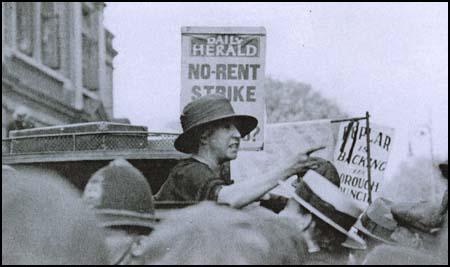
Scurr became famous throughout east London after organising food for the children of strikers during the 1912 dock strike. She also worked to improve the rights of the working-class Irish community.
As a member of the Suffrage movement, she was one of the women elected to the deputation who met Prime Minister Asquith in June 1914. She opened the meeting with a speech:
‘We women of east London are much concerned in regard to social conditions in our district. There is very great poverty around us and the rents are terribly high. There is much unemployment amongst the men and a very large proportion of the women are the principal breadwinners, although they are both the child-bearers and the keepers of the home.
‘We want to say to you that, in our view, a woman attending to her home is as much a wage earner as if she went out into a factory.’
Scurr was elected to the London County Council herself in 1925 but died two years later aged just 57.
Nellie Cressall (1882-1973)
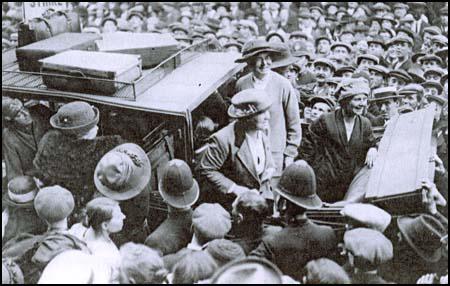
Jeannie MacKay, Susan Lawrence and Nellie Cressall.
Cressall was born in Stepney in 1882, and worked in a Whitechapel laundry from her teens. After meeting Sylvia Pankhurst in 1912, Nellie joined the east London suffragettes, saying:
‘I had been thinking for some time of the unequal rights of men and women. I could not agree that men should be the sole parent, that a mother could not even say whether her child should be vaccinated or not – or that women should receive half pay and many other things as well. I thought that here is something I can dedicate myself to to help in some way to put things right.’
Like many of the Suffragettes, Cressall was a pacifist and opposed the first world war.
In 1951, when Cressall was 69 years old (with 26 grandchildren and eight great-grandchildren) she delivered a speech at the annual Labour Party Conference in Scarborough, defending the great strides in living conditions which Labour had brought about since the First World War.
Minnie Lansbury (1889-1922)
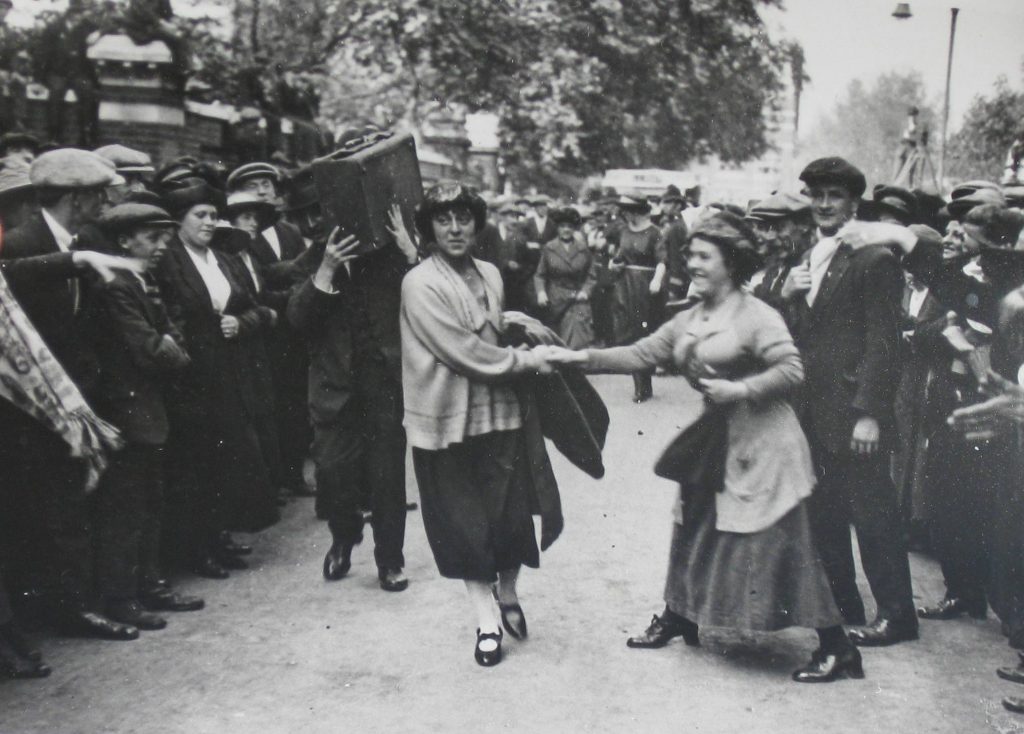
Minnie Lansbury was born in Stepney in 1889, one of seven children in a Jewish family who came to London to escape poverty and persecution in Russia.
Along with Pankhurst, Lansbury was one of the first Suffragettes in the area. She also joined the National Union of Teachers and became involved in union activism, calling for equal pay for women.
After the War, Lansbury was elected into Poplar Council. In 1921, she was one of five women who, along with their male colleagues, were sent to prison for refusing to charge full rates from their poor constituents.
Daisy Parsons (1890-1957)
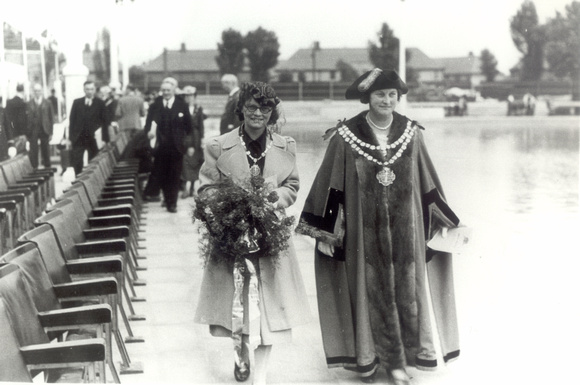
Parsons left home at 14 years old to work as a maid, and shortly afterwards began work in a cigarette factory in Aldgate, sometimes earning less than a shilling a day.
In 1912 Parsons became involved in the East London Federation of the Suffragettes and was elected to meet Prime Minister Asquith. She told him about the cigarette factory she worked in:
‘In that factory, the men were allowed time for lunch simply because they were men, but the women and girls, if we were fortunate enough to have lunch and could take bread and butter with us, had not a place to eat our lunch and were forced to take it into the lavatory and we know that is not altogether the thing.
‘The men could quite openly come along with cans and eat whatever they liked to send out for and sit and eat it at their leisure. We know that if the men were working under these conditions, through their trade unions, and through their votes they would say they would not tolerate that sort of thing.’
After being elected as a Labour councillor for Beckton in 1922, Parsons became the first woman mayor of West Ham.
Jessie Payne
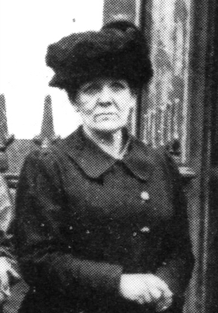
‘We come from the East End and we have the voice of the people.’
Payne and her husband Jim cared for Sylvia Pankhurst at their home at 28 Ford Road when she was recovering from being force fed in prison. Like many east London families, the Paynes lived and worked in their two rooms, making shoes and boots. Pankhurst described the couple as ‘the kindest of kind people’.
Payne also played an important role in the suffragettes’ war relief work, launching the drive to distribute milk to families with starving infants.
‘Tough’ Annie Barnes (1887-198?)
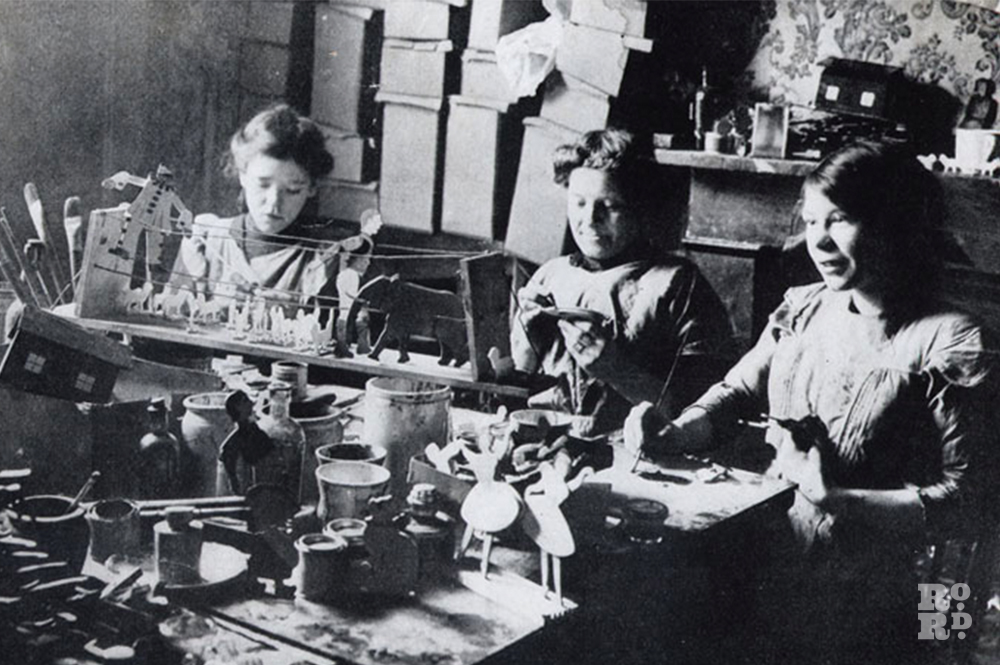
After joining the East London Federation of the Suffragettes, Barnes’ first mission was to scatter leaflets reading ‘Votes for Women’ from the top of Monument.
Annie was a councillor in Stepney for 14 years, as well as setting up a Women’s Cooperative Guild and sitting on the board of a number of local charities. She was nicknamed ‘Tough Annie’ for her fearless ways.
Norah Smyth
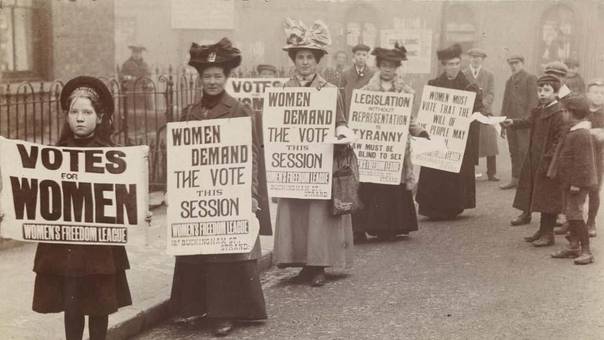
Norah Smyth came from a wealthy background and studied at Newnham College, Cambridge. She was related to Suffragette and composer Ethel Smyth, and joined the Women’s Social and Political Union, initially acting as chauffeur for Emmeline Pankhurst.
In 1912, Smyth moved to Bow where she joined Sylvia Pankhurst’s campaign to recruit new members to the Women’s Social and Political Union in the East End.
Smyth played a key part in all the Federation’s activities, from her official role as financial secretary, to drilling the People’s Army, dressing up as Father Christmas, even wallpapering and painting the Women’s Hall at 400 Old Ford Road. Author Miles Franklin described her as ‘equally capable’ to Sylvia, and admired the way she could ‘turn her hand from fitting out a baby to driving a motor car, as the necessity arises’.
Smyth had a talent for photography and it is thanks to her that we have such a fantastic visual record of the east London suffragettes’ activities, as well as moving images of the deep poverty which surrounded them.
Melvina Walker
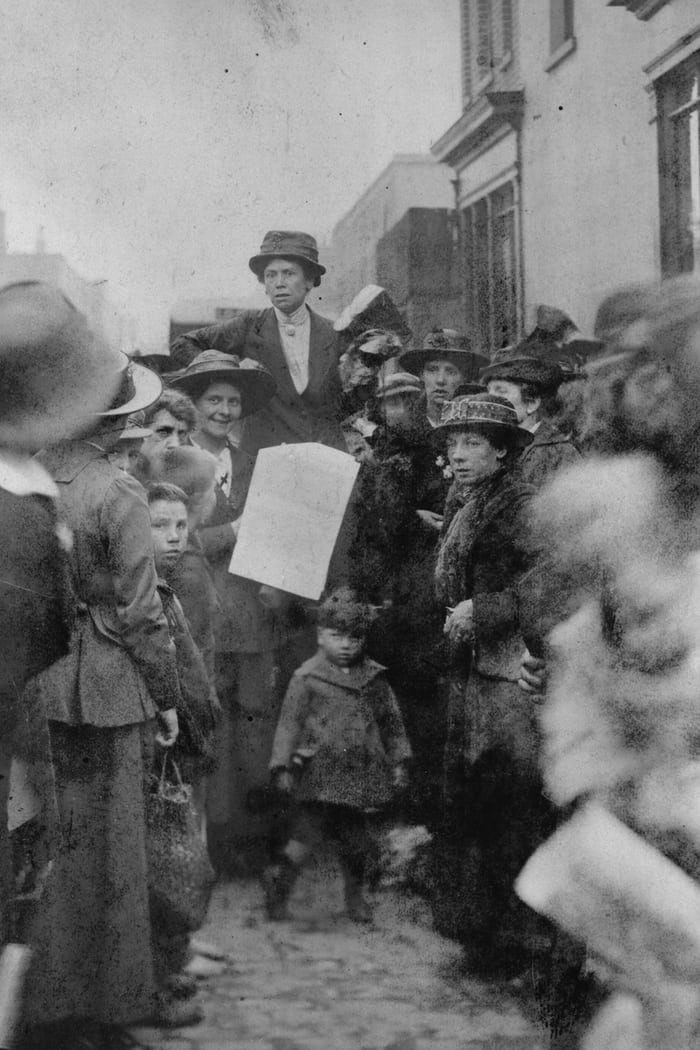
Although like most of the members of the East London Federation of Suffragettes Walker had left school in her mid teens, she became one of the most popular speakers in London, among any movement.
Sylvia Pankhurst wrote: ‘She seemed to me like a woman of the French Revolution. I could imagine her on the barricades, waving the bonnet rouge, urging on the fighters with impassioned cries.’
Rose Pengelly (1900-?)
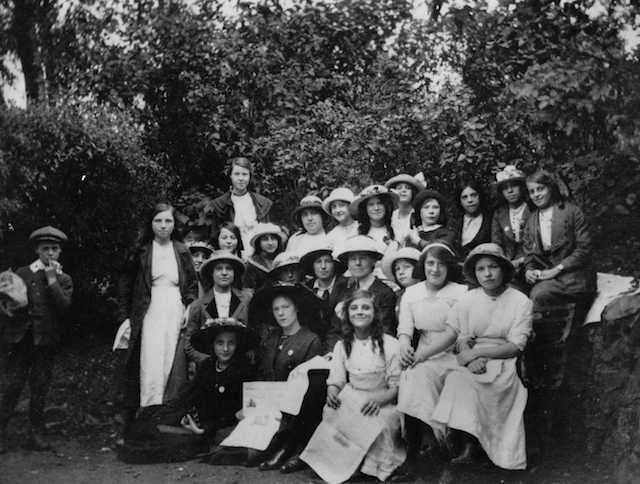
Pengelly was a member of the Junior Suffragettes Club launched by the East London Federation of the Suffragettes in 1914.
Although we know little about her it seems that Rose was a remarkable girl – brave and beautiful, with striking green eyes and red hair. She lived with her very poor family on Ranwell Street in Bow and worked at the Backs Asbestos Pipe Factory on Old Ford Road.
Aged 14, Rose led her colleagues out on strike, marching them down the road to the Women’s Hall. She lost her job because of her union activism, and was thereafter nicknamed ‘Sylvia’ by her friends and former colleagues.
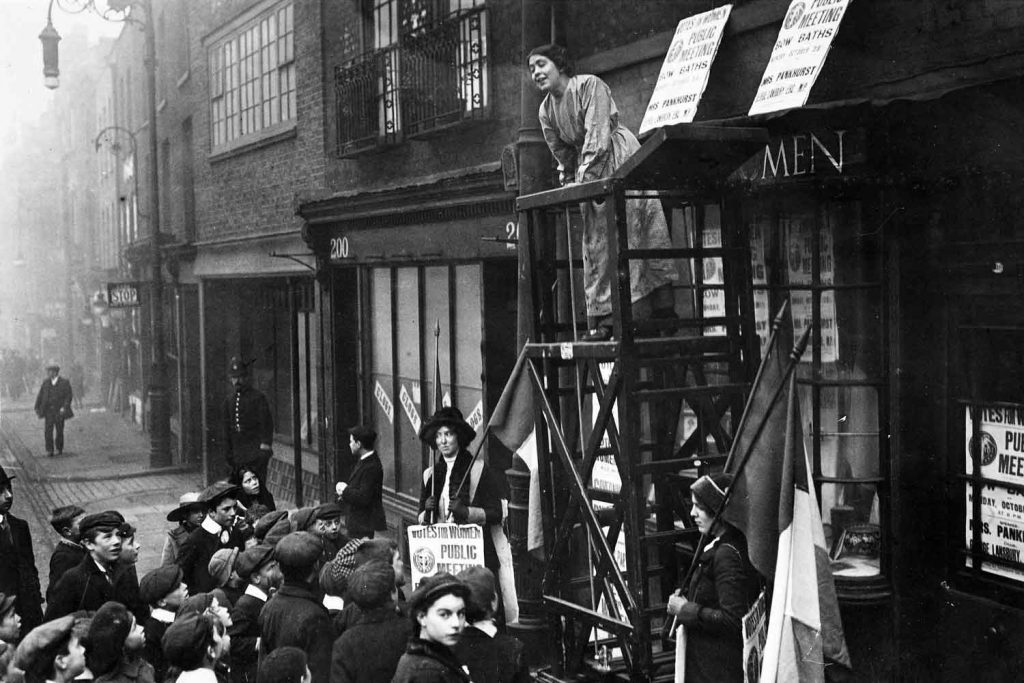
This article would not have been possible without Sarah Jackson, co-founder of the East End Women’s Museum.
If you enjoyed this article, why not read our feature about Minnie Lansbury and her clock, or about the secrets of Sylvia Pankhurst.

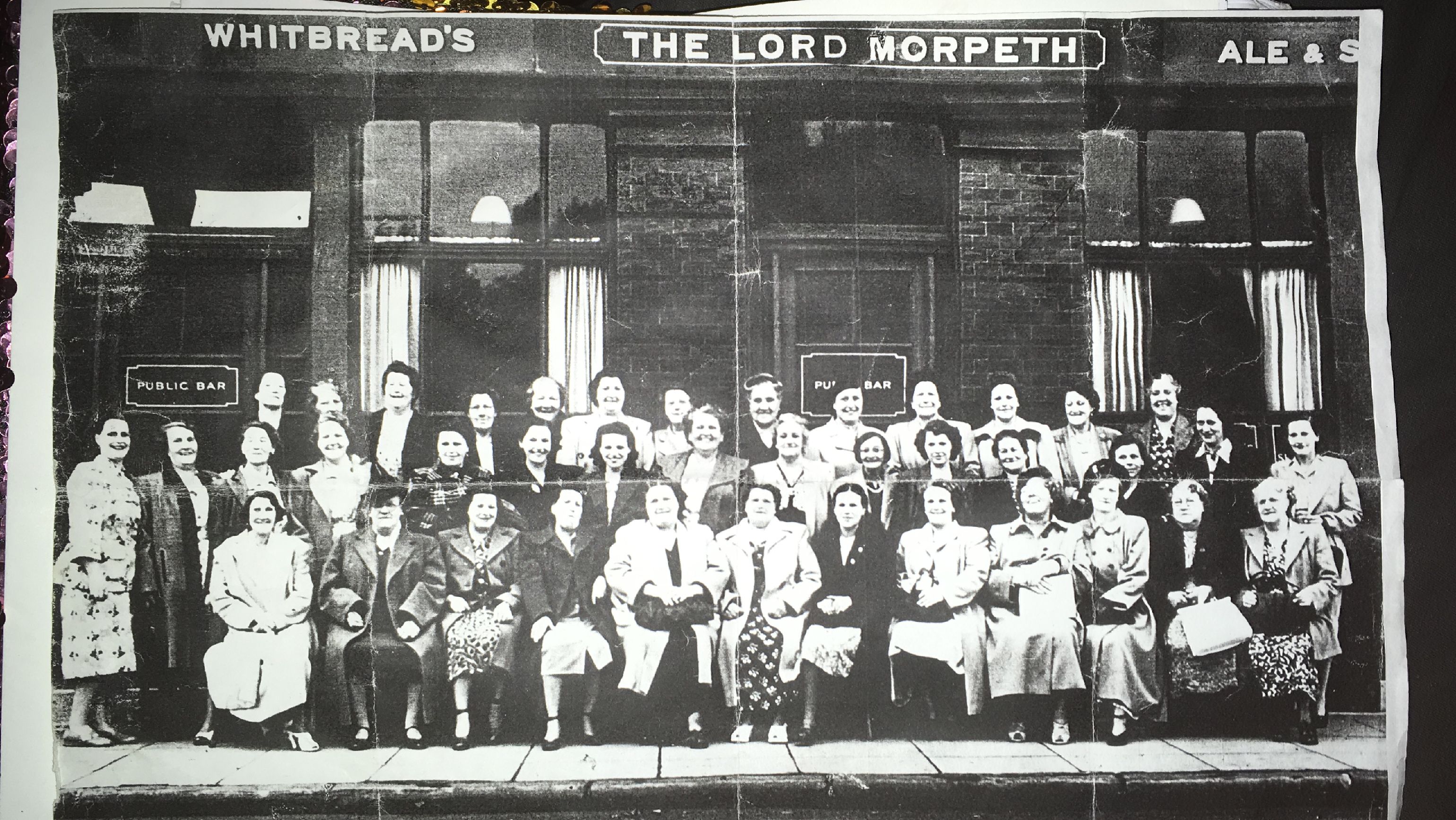

Rose Pengelly is my paternal Grandmother. My father would tell is about her activism.
I would love to know more about Rose Pengelly and her family and what happened to her after she lost her fingers in the accident at her workplace. I have included a story about the incident on Dan Jones’s website
My Great Grandmother was a suffragette. She lived in Bow. Her name was Mary Field or Marion Field.
I haven’t had much proving nor disproving . I don’t even have a photo sadly. But my Grandfather was adamant she was and he was very proud of her.
We owe these courageous women so much…
ps According to my research, Rose died in 1969 (in Wiltshire)